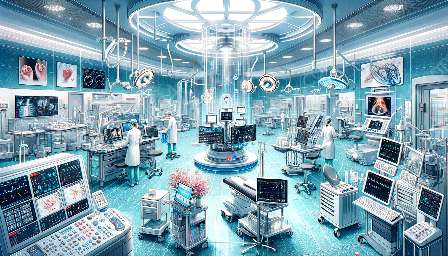Medical implants have revolutionized the treatment of various conditions, but the integration of bioengineering principles has opened up new possibilities in the creation of bioresorbable medical implants. In this article, we'll explore how bioengineering has enhanced the design of bioresorbable implants and the significant impact it has had on the field of medical devices.
The Role of Bioengineering in Medical Implants
Bioengineering encompasses the application of engineering principles to biological systems, with a focus on developing innovative solutions to address medical challenges. When it comes to medical implants, bioengineering principles play a crucial role in optimizing the functionality, biocompatibility, and durability of these devices.
Understanding Bioresorbable Medical Implants
Bioresorbable medical implants are designed to gradually dissolve and be absorbed by the body over time. These implants offer several advantages over traditional permanent implants, including reduced risk of long-term complications and the potential to support tissue regeneration.
Enhancing Design with Bioengineering Principles
By leveraging bioengineering principles, the design of bioresorbable medical implants can be enhanced in several ways:
- Material Selection: Bioengineers carefully select biocompatible materials that can gradually degrade without causing harm to the body. This involves considerations such as the degradation rate, mechanical properties, and interaction with the surrounding tissues.
- Structural Integrity: Through advanced modeling and simulation techniques, bioengineers can optimize the structural integrity of bioresorbable implants to ensure they maintain their shape and function during the gradual degradation process.
- Drug Delivery Capabilities: Bioresorbable implants can be designed to incorporate drug delivery systems, allowing for targeted and controlled release of medications to support the body's healing processes.
- Biological Integration: Bioengineering principles enable the design of implants that closely mimic the properties of natural tissues, promoting seamless biological integration and minimizing the risk of adverse reactions.
- Tissue Regeneration: Bioresorbable implants have demonstrated the ability to support tissue regeneration, making them particularly valuable in applications such as orthopedics and regenerative medicine.
- Minimally Invasive Procedures: Bioresorbable implants can enable minimally invasive surgical procedures, as they eliminate the need for secondary implant removal surgeries, reducing patient trauma and recovery time.
- Potential for Customization: Bioengineering principles offer the potential for customizable implants that are tailored to the specific needs of individual patients, maximizing the effectiveness of the treatment.
Biocompatibility and Safety
Ensuring the biocompatibility and safety of bioresorbable implants is a primary focus of bioengineers. Extensive testing and analysis are conducted to evaluate the potential impact of the implants on the body, including assessments of degradation byproducts and their effects on surrounding tissues.
Advancements in Bioresorbable Medical Implants
The integration of bioengineering principles has led to significant advancements in bioresorbable medical implants:
The Future of Bioresorbable Medical Implants
As bioengineering continues to evolve, the future of bioresorbable medical implants looks promising. Ongoing research and innovation in bioengineering are expected to further enhance the design and capabilities of these implants, paving the way for advanced medical devices that offer improved patient outcomes and quality of life.


